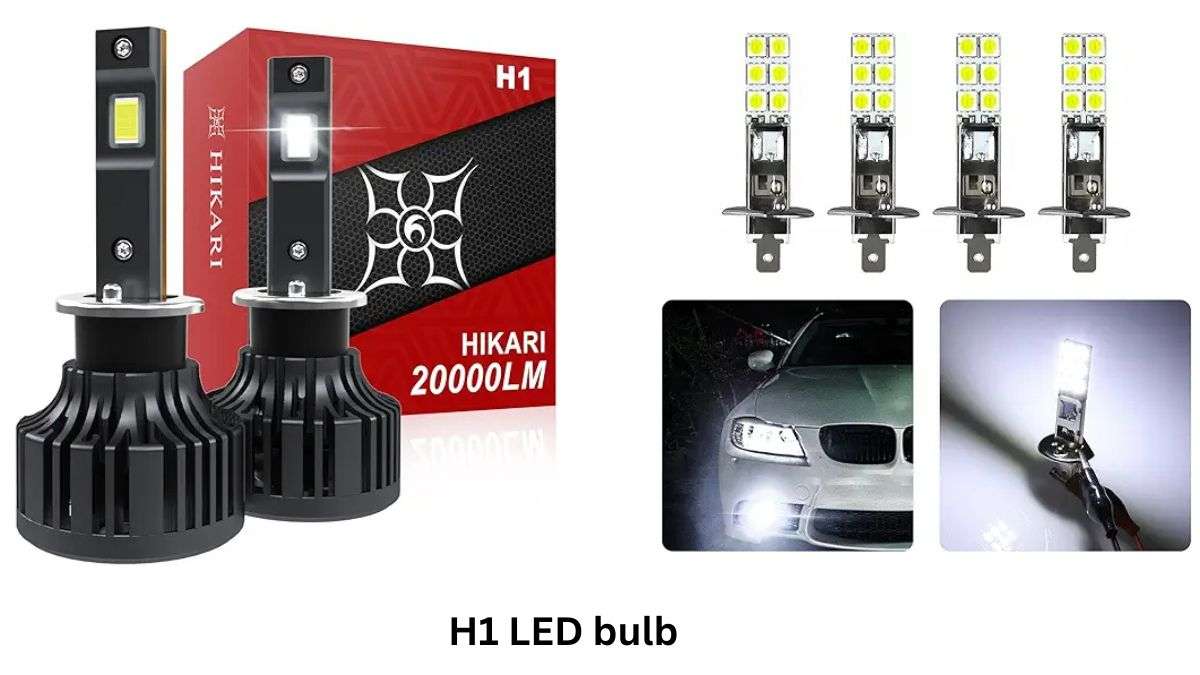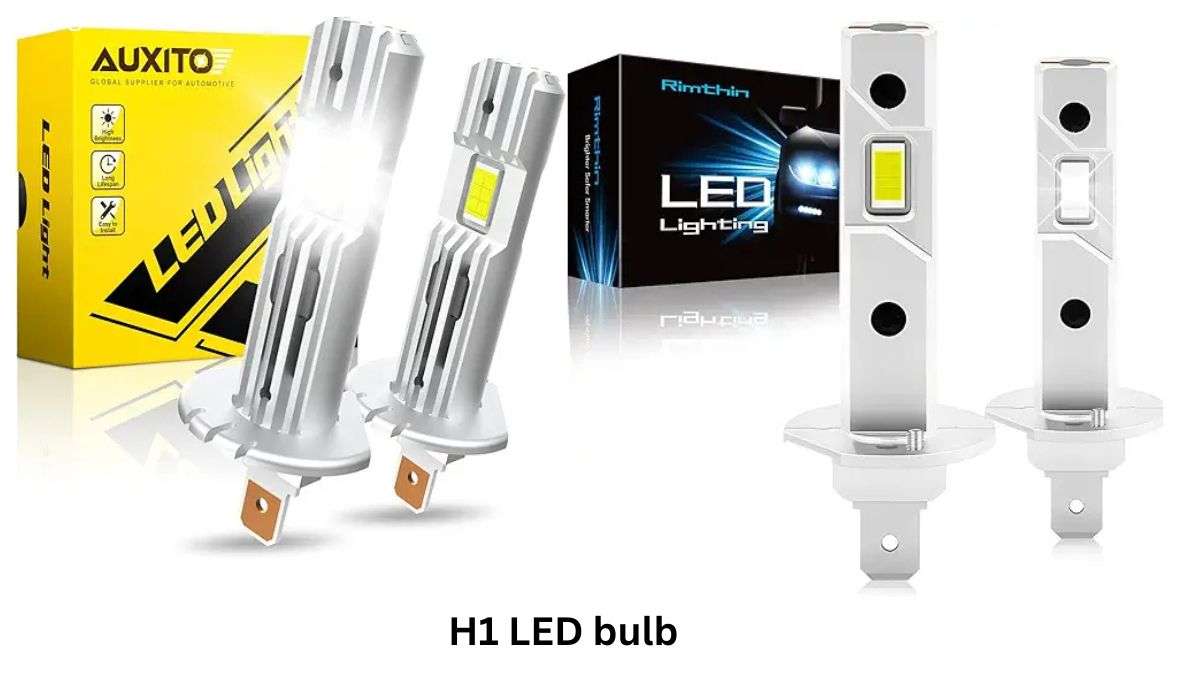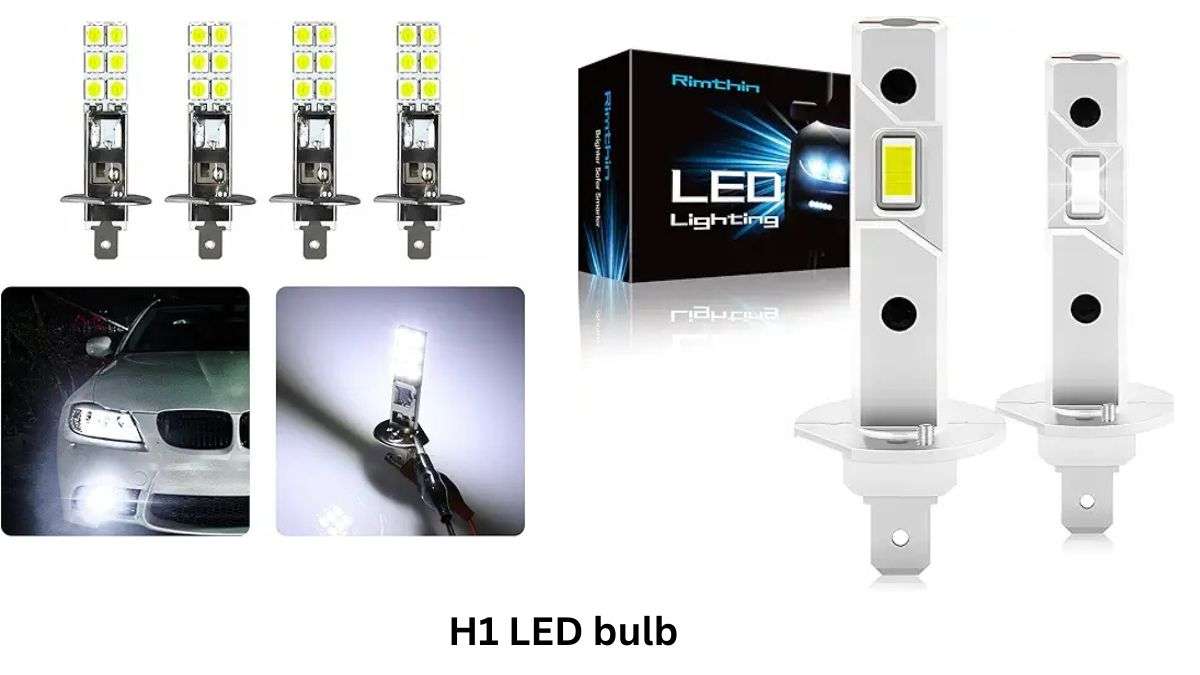Ever stared at a wall of headlight bulbs wondering which one fits your car? You’re not alone! Here’s a fascinating fact: the H1 bulb, introduced by European manufacturers in 1968, remains one of the most widely used headlight bulbs globally. As an automotive lighting knowers, We will help drivers find the right bulb for their vehicles. Let’s dive into everything you need to know about H1 headlight bulb compatibility and installation!
Understanding H1 Headlight Bulbs
The H1 bulb stands out due to its simplicity and reliability, making it a go-to choice for many vehicles worldwide. Let’s break down its key characteristics:
1. Technical Specifications and Bulb Characteristics
The H1 is a 55W halogen bulb designed with a single filament, which means it produces a straightforward beam. It’s known for its focused and powerful beam pattern, ideal for both low beam and high beam applications.
2. Difference Between H1 and Other Bulb Types
The H1 bulb has a single filament design in contrast to the H4 and H7 bulbs. For instance, an H4 bulb can produce both low and high beams, while the H7 is another single filament but has different compatibility. The H1 is often preferred in cars that need a powerful beam for specific lighting purposes.
3. Standard Power Rating and Light Output
The standard 55W power rating of the H1 bulb offers ample brightness for visibility without overloading your car’s electrical system. This wattage provides a balanced light output, enough for safe night driving while maintaining compatibility with most car electrical setups.
4. Single Filament Design
The single filament in H1 bulbs makes them simple but effective. This design creates a strong and direct beam, making it a great option for high beam or fog light applications, where focused light output is essential.
Common Vehicle Makes Using H1 Bulbs
H1 bulbs have wide compatibility across multiple car brands, especially with European, Asian, and some American manufacturers.
1. European Manufacturers
Brands like Audi, BMW, and Mercedes have a long history of using H1 bulbs, especially in models produced in the late 1990s and early 2000s. Many Volkswagen models also use H1 bulbs for their low beam and high beam applications.
2. Asian Vehicles
In Asia, Honda, Toyota, and Hyundai have incorporated H1 bulbs in various models, mostly for fog lights and sometimes high beams. This compatibility varies by model year and trim levels, so be sure to check your vehicle’s specifications.
3. American Car Compatibility
Some Ford and GM models also accept H1 bulbs, particularly in specific trim levels. It’s common to see these bulbs used for auxiliary lighting such as fog lights.

Finding Your Vehicle’s Bulb Type
Not sure if an H1 bulb is right for your car? Here’s how you can quickly confirm:
- Check Your Current Bulb Type
A look at your existing headlight bulb can reveal its type. H1 bulbs typically have a slim, single-prong design that’s easy to recognize. - Use Your Vehicle Owner’s Manual
Your car’s manual often lists compatible bulb types, including which bulbs go in which light assembly (low beam, high beam, or fog lights). - Online Bulb Finder Tools
Many websites provide bulb finder tools where you can enter your car’s make and model to get the right match. A VIN number lookup is another accurate method to check compatibility, as it provides details specific to your vehicle.
Installation and Fitting Guide
Replacing an H1 bulb is generally straightforward. To guarantee a seamless installation, adhere to these steps:
- Tools and Preparation
Typically, you’ll only need a screwdriver and gloves for safe handling. Make sure your car is off and the lights are cool before you begin. - Safety Precautions During Installation
Always wear gloves to avoid touching the glass directly, as oils from your fingers can shorten the bulb’s lifespan. Be gentle when handling the bulb to avoid breaking or scratching it.
Step-by-Step Replacement
- Open the hood and locate the headlight assembly.
- Remove the back cover of the headlight.
- Take out the old lightbulb and disconnect the electrical harness.
- Insert the new H1 bulb, reconnect the wiring, and replace the cover.
Fitting Challenges and Solutions
Some headlight assemblies may be cramped, making it tricky to reach the bulb. In these cases, you might need a pair of needle-nose pliers for assistance.
Upgrading Options for H1 Bulbs
If you’re looking for better performance or a different look, consider these upgrades:
- Standard Halogen Replacements
A straightforward halogen H1 replacement bulb offers a similar brightness and color to your original bulb, keeping things simple and affordable. - Performance Upgrade Options
Performance halogen bulbs give you brighter light without requiring extra power. These are excellent for improving visibility at night. - LED Conversion Possibilities
LED H1 bulbs are brighter and energy-efficient but may not fit all car models directly. Ensure LED conversions are legal in your area, as not all are approved for on-road use. - HID/Xenon Alternatives
HID and Xenon options provide a very bright, white light output, although they typically require extra installation components. Legal considerations vary, so check local regulations before installing.
Troubleshooting Common Issues
Sometimes, installation doesn’t go as planned. Here are solutions to common issues:
- Fitment Problems:
If the bulb doesn’t fit, check to ensure it’s the correct size and that no parts of the assembly are blocking it. - Connection and Wiring Challenges:
Make sure the wiring harness is firmly connected and that there’s no corrosion on the connectors. - Alignment and Adjustment Tips:
Improper alignment can cause poor visibility. After installation, check the beam pattern to ensure it’s properly aligned with the road. - When to Seek Professional Help
If you face ongoing issues, such as flickering lights or poor alignment, consider visiting a professional.
Maintenance and Care
Regular care can extend the lifespan of your H1 bulbs:
- Expected Lifespan of H1 Bulbs
Halogen H1 bulbs typically last 500 to 1,000 hours under normal driving conditions. - Proper Cleaning and Handling
Keep the bulbs free from fingerprints, as oils can cause hot spots that shorten bulb life. Always wear gloves when handling bulbs. - Signs of Bulb Failure
If your headlights seem dim or flicker, it’s likely time to replace them. - Replacement Frequency Recommendations
Consider replacing your bulbs every couple of years, especially if you drive frequently at night.
Conclusion
Finding the right headlight bulb doesn’t have to be a headache! Now that you know which vehicles use H1 bulbs and how to properly install them, you can approach your headlight maintenance with confidence. Always verify your model’s compatibility, and if installation seems daunting, don’t hesitate to consult a professional. Want to get the most out of your H1 bulbs? Consider checking out performance upgrades for improved visibility on the road!
Related articles:
Hi, I’m Malik Suhail—an SEO expert, web designer, and passionate blogger with 2 years of experience. I specialize in crafting content that is not only informative but also tailored to meet the needs of my readers.
I write about diverse topics, always striving to simplify complex ideas and provide valuable insights that resonate with my audience. Whether it’s about SEO strategies, web design trends, or blogging tips, I am committed to delivering well-researched, practical, and easy-to-understand information.
My mission is to help readers navigate the digital world with confidence and clarity. I believe in adding value through authentic content that inspires action and delivers results.


